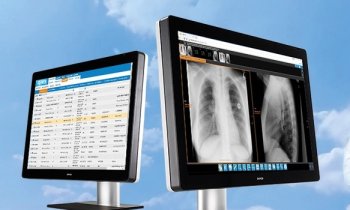Personalized medicine could help to save 100 billion Euros
Despite huge increases in spending over the last three decades, progress in dealing with the most frequent and burdensome diseases is appalling. The EU Flagship Pilot IT Future of Medicine (ITFoM) could remedy that. The flagship‘s investments of 1 billion euros in the course of the next decade are expected to save up to 100 billion euros per year in health expenditures in the future.

Concerted advances in cloud computing, cellular and molecular research, genome deciphering and analysis tools for huge amounts of clinical data should enable scientists to create a „virtual twin“ of every patient, capturing – and simulating – the individual reaction of his/her body to changes of environment, lifestyle, or medicines, and alerting of possible pathogenic alterations before symptoms appear, experts said. This can lead to a personalized choice of therapeutic options, including information on expected benefits and risks for the unique cellular and molecular constellation of each patient.
„Although spending on medical research and therapies has increased dramatically during the last 30 years, progress in dealing with the most frequent and burdensome diseases like cancer, heart disease, type-2 diabetes, obesity or rheumatoid arthritis is still appalling“, said Prof Dr Angela Brand, Institute for Public Health Genomics (IPHG) at the Faculty of Health, Medicine and Life Sciences (FHML) at Maastricht University and Director of the European Centre for Public Health Genomics (ECPHG), at the European Health Forum Gastein (EHFG). „One important reason is that the cellular, molecular and genetic singularity of each patient is not yet taken into account. We know, for example, that a certain percentage of patients will respond to a certain drug, but not if an individual patient will be a responder or not – which leads to lost opportunities and lots of money wasted in failed trials.“
The EU Flagship Pilot IT Future of Medicine (ITFoM) is designed to remedy for that. Its ambitious goal is to prepare the ground for the creation of a „virtual twin“ of every patient capturing and simulating the individual reaction of his or her organism to changes of environment or lifestyle, or to drugs, and alerting of possible pathogenic alterations before symptoms appear. „Both the necessary data and the model could be stored for example on a USB-stick the patient would present to his doctor along with the description of his symptoms. On the basis of these data and predictive analysis done on the doctor’s PC, the patient could be suggested an individualised choice of therapeutic alternatives: Drugs, lifestyle changes, rehabilitation measures or combinations thereof, effective in his/her case, including information on expectable benefits and risks for his/her unique cellular and molecular constellation will all be shown on the doctor’s PC for discussion between her and the patient. That’s no less than a shift of paradigm from a ‚doctor’s medicine’ to a ‚patient’s medicine’, with the latter in charge for preserving his/her health,“ Prof. Brand said. „Moreover, it leads from a ‚repair medicine’ to a ‚medicine just in time’, capturing and counteracting pathogenic processes before they become symptomatic.“
The technology promoted by ITFoM is new and futuristic for medical applications. „In many other fields, computer modeling has been daily routine for a long time“, Prof. Dr. Hans Lehrach, Director of the Max Planck Institute for Molecular Genetics (Berlin, D) explained. „Wherever complex interactions of different factors and huge amounts of data need to be processed, computer modeling is co-involved – from weather forecasts to virtual crash tests in newly developed cars. Only medicine has so far ignored this development, although the human body is much more complex than any other of its possible applications. At present, medical doctors have less information about their patients than the average car mechanic has about the car he is repairing. This results in a tremendous waste of resources."
Promoting a revolution in integrated medical information management
These deficits are not due to a lack of technological capacities. „If we are to enable doctors to analyze a person’s genome once, and then the function of her/his genome at every stage of disease management, this will lead to exciting possibilities,“ Prof. Brand added. „The genetic, molecular, physiological, anatomical and environmental data of an individual patient can be connected with current medical knowledge in order to identify an adequate therapy. In addition, the data-sets of all patients could be linked in a way that helps drug researchers, epidemiologists, and health care politicians to make appropriate decisions. We need fundamental advances in computational sciences to be able to do so.“ ITFoM is set to fund such advances and to prepare the necessary tools needed to tackle the immense computational challenges.
„A widespread uptake of personalized medicine, though, depends very much on whether this advanced form of medicine is recognized by European health care systems and whether its costs are redeemable“, Robert Madelin, Director General for Information Society at the European Commission, told the EHFG.
At least two projects already prove the capacity of a patients virtual model to predict the efficacy or inefficacy of therapeutic options. At the Department of Molecular Cell Physiology at the VU University Amsterdam/Netherlands Institute for Systems Biology, scientists managed to analyze the pathways in parasites causing sleeping sickness. „We discovered individual patterns of bio-molecular vulnerability which in turn hint at the pathways the therapy should target“, explained the department’s head Prof Dr Hans Westerhoff. If, for example, the parasite causing sleeping sickness (or a tumor causing cancer) depends strongly on its glucose transport system whereas the particular patient‘s own cells do not, the patient should respond very well to drugs inhibiting the transporter and hence killing the parasite (or tumor). My group in the Manchester Centre for Integrative Systems Biology, has similarly shown how one may predict whether a patient tolerates high doses of Paracetamol. For patients that do not, alternative therapies can be designed.“
At the Max Planck Institute for Molecular Genetics, researchers were already able to build virtual genetic models of patients confirming clinical studies on the preconditions to be met for certain new cancer therapies to be effective. „In colon cancer, the aberrance of one single base in the almost endless chain of the DNA leads to a mutation of the RAS G-protein“, the institute’s director, Prof. Dr. Hans Lehrach, told in the meeting. „In patients with an activated RAS G-protein mutation, a certain class of novel drugs, the so-called EGFR-inhibitors, cannot be effective. This means that the DNA sequencing of a colon cancer patient can save him a therapeutic trial doomed to fail and open the avenues of more promising options from the very beginning.“
This is why experts expect a high return of investment. „Current cancer therapies are extremely costly“, Prof. Brand pointed out. „For example, a full course of chemotherapy is about 30.000 Euros, but is usually offered to all colon cancer patients, although only 30 percent respond to it. By developing and implementing the ‚virtual twin’ we could determine these patients in advance, thus saving the 70 percent of therapy costs now wasted.“
Prof. Westerhoff: „By the achievements to be realized by ITFoM we can expect savings of worldwide health care costs in excess of € 100 billion – every year, for an investment of a mere € 100 million/year through one decade. Where else do we find such return on investment, let alone the enormous benefit to human happiness?“
19.10.2011








